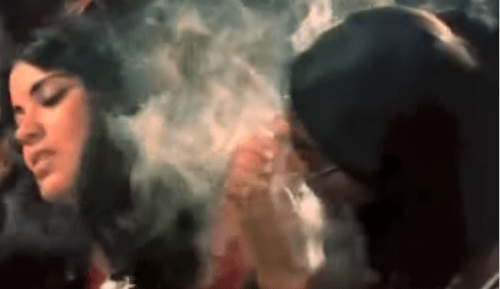Imagination and Bhole Shankar: What’s Drugs Got to Do with Them?
When it comes to drugs there are two issues that would be interesting to probe. First, whether drugs stimulate imagination and creativity and second, the abuse of the names of Hindu Gods vis-a-via drugs.
Mar 20, 2019, 19:50 IST
Join our WhatsApp Channel for Live Updates

During the romantic movement in the history of English Literature ‘Imagination’ was highly valued and equated with ‘God’. Over the passage of time, both these terms have become intrinsically and insidiously associated with substance abuse in one form or the other.
When it comes to drugs there are two issues that would be interesting to probe. First, whether drugs stimulate imagination and creativity and second, the abuse of the names of Hindu Gods vis-a-via drugs.
It is a well-known tale for the students of English literature that Samuel Taylor Coleridge’s ‘Kubla Khan or A Vision in a Dream: A Fragment’ (1816) was conceived in a dream while the poet was under the influence of opium. According to Coleridge’s preface to ‘Kubla Khan’, the poem was composed a day after he experienced an opium-induced dream after reading a book by Samuel Purchas that described Xanadu. Upon waking, he transcribed what he remembered from his dream until he was interrupted by someone. The interruption caused him to forget the lines. He did not publish the poem for years, and when finally, he did publish it, in 1816, he added a preface which described the story about its composition.
Such tales of drugs induced creative output makes many people believe that drugs stimulate the imagination. The truth is that drugs do not enhance imagination. Had it been so, all great writers, painters and artists would have been hardened drug addicts. Coleridge’s opium addiction caused him to lose his creativity that troubled him all his life. Even ‘Kubla Khan’ is denounced as a poem that lacks organic unity, owing perhaps to its source in a dream caused by sleep induced by opium. There is enough scientific data to prove that all drugs are depressor. Drugs are shown to slow down the mind. Drugs are counterproductive for creativity. How can something that can slow down brain activity accelerate creativity?
Secondly, drugs are often associated with certain Hindu gods and goddesses. A very famous movie of 1971, ‘Hare Krishna Hare Rama’ was one such movie that at once brought the association of religion with drugs to the forefront and stressed on the importance of will power. The film was a very intelligent study of drugs, money, filial relationships, hippie culture and the effect of these on impressionable minds. The movie is set against the backdrop of idol smugglers set in Pasupathi Nath Temple of Kathmandu, Nepal. The film featured a superhit song featuring the sensuous and stunningly beautiful Zeenat Aman singing the incredibly popular “Dum maro dum” beautifully sung by Asha Bhonsle and composed by R D Burman.
“Dam maro dam / Mit jayen gam / Bolo subah shaam / Hare Krishna Hare Ram” ___ For years this song has been an anthem for the drug addicts around the world. Immediately after this song comes a corrective version sung by Kishore Kumar and picturized on Dev Anand. The characters who were swaying to the tune of “Dum maro dum” earlier find themselves ashamed, heads bowed in deep sadness and shame.
“Dekho o deewaanon, tum ye kaam na karo
Raam ka naam badnaam na karo,
Raam ko samjho, Krishhn ko jaano,
neend se jaago o mastaanon
jeet lo man ko padh kar Geetaa
mann hi haaraa to kya jeetaa”
“Mann hi haara to kya jeeta”, this is the crux of the matter. “Mann” here is self-love, will power and confidence. The lack of will power turns a person into a drug addict who misconstrues drugs as a harbinger of salvation by shrouding under the garb of the chants of Hare Krishna and Hare Ram.
Some even use Bhole Shankar or Shivji’s name as a garb to self permit the use of drugs. A common sight in places like Pushkar in Rajasthan and Paharganj in Delhi is foreigners wearing t-shirts with the images of Hindu Gods and Goddesses and a cigarette dangling in a hand with a rudraksha necklace adorning the neck. Some even misuse God Shiva as a bearer of the culture of drugs. What is amazing is that we find nothing wrong in the association of Bhole Shankar as a deity of intoxication. We have so much internalized the association of Lord Shiva with all types of drugs. How can we forget another famous song of the 1970s: “Jai jai Shiv Shankar / Kannta lage na kankar / jo payala tere naam ka piya”. The ‘payala’ is a symbol of the rasa of spiritual knowledge. With right knowledge comes the ability to face the hardships of life. The “kanta” (thorn) and “kankar” (pebble) are nothing but the hardships of life that drug addicts seek to escape by misinterpreting the Payala (cup) as a cup of an intoxicant.
In conclusion, we can say that drugs do not enhance creativity and the use of the names of Hindu Gods and Goddesses vis-a-vis drugs is blasphemous and morally, spiritually sand ethically wrong.
About the author:
Dr. Sapna Dogra completed her B.A and M.A. in English Literature from sUniversity of Delhi. She holds a Ph.D. from Jawaharlal Nehru University and is presently working as an Assistant Professor in the Department of English in Government College Baroh, Himachal Pradesh. She has over ten years of teaching experience. Her research articles, book reviews and translations have been published in reputed journals and magazines. She has also developed school level books. Her research interests include Folklore Studies, Translation Studies, Indian English Writing, Hindi Literature and Popular Literature. She can be reached at sapnardm@gmail.com.
To join us on Facebook Click Here and Subscribe to UdaipurTimes Broadcast channels on GoogleNews | Telegram | Signal





